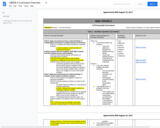
6th Grade Regular Math: Course Scope & Sequence.
- Subject:
- Mathematics
- Material Type:
- Full Course
- Provider:
- Liberty Public Schools
- Date Added:
- 08/15/2017

6th Grade Regular Math: Course Scope & Sequence.
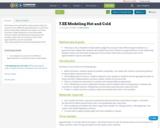
This lesson unit is intended to help students judge the accuracy of two different approximations to a particular linear relationship. Students will compare two linear functions as approximations to the relationship between Celsius and Fahrenheit temperature and consider under what circumstances each of the approximations may be reasonable.
http://map.mathshell.org/download.php?fileid=1629
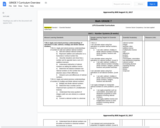
7th Grade Regular Math: Course Scope & Sequence.
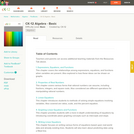
CK-12 Foundation's Basic Algebra FlexBook is an introduction to the algebraic topics of functions, equations, and graphs for middle-school and high-school students.
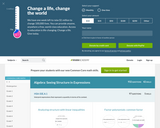
This site teaches Structure in Algebraic Expressions to High Schoolers through a series of 3482 questions and interactive activities aligned to 26 Common Core mathematics skills.
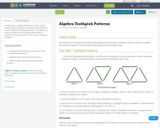
In this lesson, toothpick patterns are used to explore growth patterns. Students are asked to extend patterns using toothpicks, drawing, and numbers. By observing patterns, students will strengthen their ability to represent real-world patterns to the abstract language of algebra.
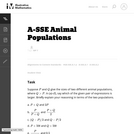
In this task students have to interpret expressions involving two variables in the context of a real world situation. All given expressions can be interpreted as quantities that one might study when looking at two animal populations.
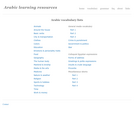
These extensive vocabulary lists are grouped by topic, and they include MSA terms and occasionally their Egyptian colloquial equivalent. There are also a number of lists with various idioms and Egyptian colloquial expressions. Arabic spellings are accompanied by transliterations.
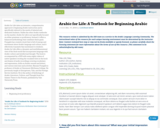
Arabic for Life takes an intensive, comprehensive approach to beginning Arabic instruction and is specifically tailored to the needs of talented and dedicated students. Unlike the other Arabic textbooks on the market, Arabic for Life is not specifically focused on either grammar or proficiency. Instead, it offers a balanced methodology that combines these goals. Frangieh has created a book that is full of energy and excitement about Arabic language and culture, and it effectively transmits that excitement to students. Arabic for Life offers a dynamic and multidimensional view of the Arab world that incorporates language with Arabic culture and intellectual thought.
The book is accompanied by a DVD with some eighty videos of native speakers reciting the vocalized texts in the book and dozens of audio recordings covering vocabulary and expressions, drills on Arabic sounds and letters, and various exercises and activities.
Bassam Frangieh is professor of Arabic at Claremont-McKenna College. He previously taught at Georgetown, Yale, and the Foreign Service Institute. He is the author of Anthology of Arabic Literature, Culture, and Thought from Pre-Islamic Times to the Present, published by Yale University Press.
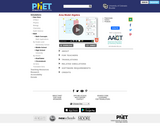
Build rectangles of various sizes and relate multiplication to area. Discover new strategies for multiplying algebraic expressions. Use the game screen to test your multiplication and factoring skills!
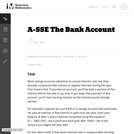
This real world task requires students to answer questions about equations for calculating compound interest.
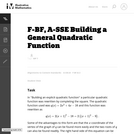
This task is for instructional purposes only and builds on ``Building an explicit quadratic function.''
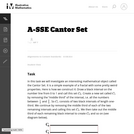
The purpose of this task is to use finite geometric series to investigate an amazing mathematical object that might inspire students' curiosity. The Cantor Set is an example of a fractal.
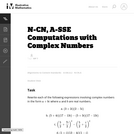
This task asks students to perform computations involving complex numbers using the given information.
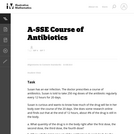
This task presents a real world application of finite geometric series. The context can lead into several interesting follow-up questions and projects. Many drugs only become effective after the amount in the body builds up to a certain level. This can be modeled very well with geometric series.
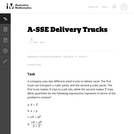
The primary purpose of this task is to illustrate certain aspects of the mathematics described in the A.SSE.1. The task has students look for structure in algebraic expressions related to a context, and asks them to relate that structure to the context. In particular, it is worth emphasizing that the task requires no algebraic manipulation from the students.
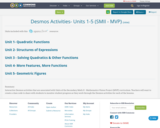
Interactive Desmos activities that are associated with Units of the Secondary Math II - Mathematics Vision Project (MVP) curriculum.
Teachers will want to create a class code to share with students to monitor student progress as they work through the Desmos activities for each of the lessons.
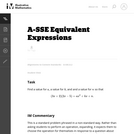
This is a standard problem phrased in a non-standard way. Rather than asking students to perform an operation, expanding, it expects them to choose the operation for themselves in response to a question about structure. The problem aligns with A-SSE.2 because it requires students to see the factored form as a product of sums, to which the distributive law can be applied.
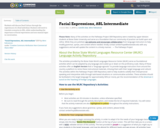
Students will discuss Deaf Culture through the experiences of a Deaf individual. Students will work to translate scenarios in ASL, while understanding the importance of facial expressions and non-manual signs in conversation.

Students will discuss Deaf Culture through the experiences of a Deaf individual. Students will work to translate scenarios in ASL, while understanding the importance of facial expressions and non-manual signs in conversation.